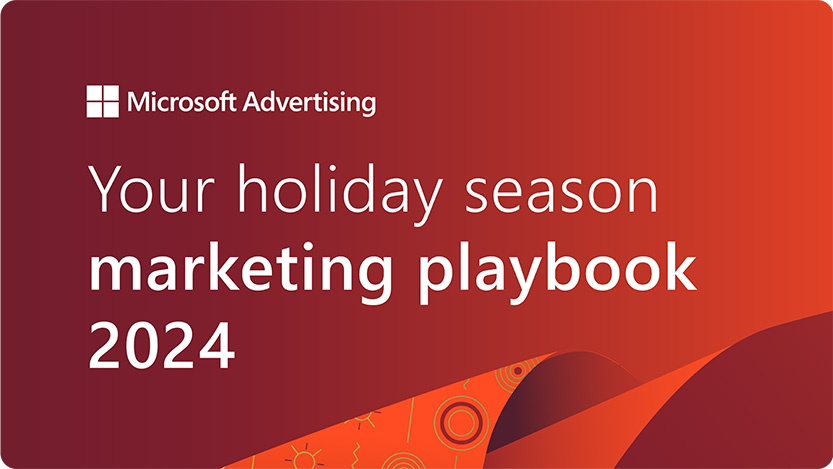Blog post
Optimizing Your Content for Inclusion in AI Search Answers

Whether you call it GEO, AIO, or SEO, one thing hasn’t changed: visibility is everything. In today’s world of AI search, it’s not just about being found, it’s about being selected. And that starts with content.
AI search is rapidly evolving, reshaping how people find and consume information online. In June 2025, AI referrals to top websites spiked 357% year-over-year, reaching 1.13 billion visits.1 2 Powered by Bing’s search index, experiences like Microsoft Copilot, Microsoft Start, and others handle billions of queries each month, embedding Bing deeply into how people search, shop, and explore online.3
For marketers and SEO professionals, this shift means visibility is no longer defined by ranking position alone. While there’s no secret strategy for being selected by AI systems, success starts with content that is fresh, authoritative, structured, and semantically clear. And at the center of it all is content itself — clear, current, comprehensive content that AI systems can surface with confidence.
What Makes Content Stand Out in AI Search?
It’s important to understand that traditional SEO fundamentals still matter. Crawlability, metadata, internal linking, and backlinks remain essential for ensuring your content is discoverable. But they’re just the starting point.
What’s different now is how selection happens. In traditional search, visibility meant appearing in a ranked list of links. In AI search, ranking still happens, but it’s less about ordering entire pages and more about which pieces of content earn a place in the final answer. Assistants like Copilot break content down, a process called parsing, into smaller, structured pieces that can be evaluated for authority and relevance. Those pieces are then assembled into answers, often drawing from multiple sources to create a single, coherent response.
For marketers, the challenge is making sure their content is easy to understand and structured in a way that AI systems can use. If it’s not aligned with what assistants are looking for, it’s less likely to be included in the answer, even if it’s technically “optimized.”
How Should You Structure Content for AI Search Visibility?
AI assistants don’t read a page top to bottom like a person would. They break content into smaller, usable pieces — a process called parsing. These modular pieces are what get ranked and assembled into answers.
Title, Descriptions, and H1s
- Your page title, description, and H1 tag (the top-level HTML heading) are important signals AI systems use to interpret purpose and scope.
- Page titles should clearly summarize what the content delivers, using natural language that aligns with search intent.
- Descriptions help AI and users understand context. Avoid keyword stuffing and instead explain value or outcome.
- H1 tags act as your content’s headline. They should match (or closely reflect) the page title while setting clear expectations for what follows. Consistent alignment between title, H1, and description improves both discoverability and confidence signals for AI systems.
Example:
Title: “Best Quiet Dishwashers for Open-Concept Kitchens”
H1: “Quietest Dishwashers for Modern Homes”
Description: “Explore top-rated dishwashers designed for open kitchens, featuring ultra-low decibel ratings, energy efficiency, and smart-home compatibility.”
Headings (H2s and H3s)
Headings are HTML tags (<h2>, <h3>) that mark where one idea ends and another begins. For AI, they act like chapter titles that define clear content slices.
Example: Instead of a vague heading like “Learn More,” use “What Makes This Dishwasher Quieter Than Most Models?”
Q&A Formats
Direct questions with clear answers mirror the way people search. Assistants can often lift these pairs word for word into AI-generated responses.
Example:
Q: How loud is the dishwasher?
A: It operates at 42 dB, which is quieter than most dishwashers on the market.
Lists and Tables
Bulleted lists, numbered steps, and comparison tables break complex details into clean, reusable segments. They’re especially effective for how-to queries and feature comparisons.
Weak Example | Strong Example |
| Long descriptive paragraph about features | Bulleted list of top 3 dishwasher features: – 42 dB noise level |
How Does Schema Markup Help AI Understand Your Content?
Schema is a type of code that helps search engines and AI systems understand your content. It’s usually added in JSON-LD format as a script in the backend of your site, often through your CMS (like WordPress, Shopify, or Wix) or by a developer inserting it into the page code. Schema can label your content as a product, review, FAQ, or event, turning plain text into structured data that machines can interpret with confidence. To explore which schema types apply to your site, visit schema.org.
Common Mistakes That Hurt AI Search Visibility
Avoid long walls of text: They blur ideas together and make it harder for AI to separate content into usable chunks.
Don’t hide important answers in tabs or expandable menus: AI systems may not render hidden content, so key details can be skipped.
Avoid relying on PDFs for core information: While search engines can index text-based PDFs, they often lack the structured signals (like headings and metadata) that HTML provides. For critical details, use HTML to ensure clarity and better parsing.
Avoid putting key information only in images: While AI systems can sometimes extract or interpret text from images, it adds extra complexity and often reduces accuracy. Always provide alt text or present critical details in HTML to ensure they’re reliably understood.
How to Write Clear, Structured Content for AI Search
Clarity is about more than just word choice, it’s how you phrase, format, and punctuate so AI systems can interpret your content with confidence. AI systems don’t just scan for keywords; they look for clear meaning, consistent context, and clean formatting. Precise, structured language makes it easier for AI to classify your content as relevant and lift it into answers.
How Can Semantic Clarity Boost Your AI Search Rankings?
Write for intent, not just keywords. Use phrasing that directly answers the questions users ask.
Avoid vague language. Terms like innovative or eco mean little without specifics. Instead, anchor claims in measurable facts.
Add context. A product page should say “42 dB dishwasher designed for open-concept kitchens” instead of just “quiet dishwasher.”
Use synonyms and related terms. This reinforces meaning and helps AI connect concepts (quiet, noise level, sound rating).
What Formatting and Punctuation Practices Help AI Parse Content?
Keep punctuation simple: Use periods and commas consistently; avoid decorative arrows, symbols, or long strings of punctuation that break parsing.
Be cautious with em dashes: Overuse can confuse sentence structure for machines. A period or semicolon is usually clearer.
Use bullets or numbers for lists: Structured formatting signals clear separation of ideas, which AI can repurpose directly. However, avoid overusing them. Bullets work best for key steps, comparisons, or highlights. Not for every line of content.
What Writing Mistakes Reduce AI Search Visibility?
Overloaded sentences: Packing multiple claims into one line makes it harder for AI (and readers) to parse meaning.
Decorative symbols: Arrows (→), stars (★★★), or strings of punctuation (!!!) distract from the actual content.
Unanchored claims: Saying something is “next-gen” or “cutting-edge” without context leaves AI unsure how to classify it.
How to Optimize Content for Snippet Selection
In traditional search, snippets are the short previews pulled from your page that appear directly in results. In AI search, the same principle applies. AI systems extract concise, “snippable” pieces of content and weave them into answers. AI can lift a single line or combine multiple snippets from across sites into one answer.
What makes content eligible for featured snippets?
Concise answers: One- to two-sentence responses that directly address a question.
Structured formatting: Lists, tables, and Q&A blocks that can be lifted cleanly.
Strong headings: Signals that help AI know where a complete idea starts and ends.
Self-contained phrasing: Sentences that make sense even when pulled out of context.

Checklist: Essential Practices for AI Search Visibility
While there’s no secret sauce that guarantees selection in AI answers, there are clear practices that improve eligibility. Think of them as the foundations that make your content easier for AI systems to process, rank, and assemble.
Core practices for AI search visibility:
Traditional SEO is still essential: Ensure crawlability, metadata, and internal linking remain the baseline.
Structure your content: Use schema, clear headings, and modular layouts.
Write with clarity: Be precise in language, context, and punctuation.
Make answers snippable: Use concise, self-contained phrasing in lists, Q&As, and tables.
Visibility in AI search isn’t about luck. Structure, clarity, and snippability work together to make your content easier for AI to process and surface. While nothing guarantees selection, following these practices gives your content the best chance to be chosen for real user queries.
Want to learn more? Join us for the webinar Optimizing Content for Inclusion in the Era of AI on November 6th.
[1] TechCrunch. AI referrals to top websites were up 357% year-over-year in June, reaching 1.13B. Published July 25, 2025. https://techcrunch.com/2025/07/25/ai-referrals-to-top-websites-were-up-357-year-over-year-in-june-reaching-1-13b/
[2] SimilarWeb. AI referral traffic winners. Published July 29, 2025. https://www.similarweb.com/blog/insights/ai-news/ai-referral-traffic-winners/
[3] OneClick Marketing. What’s the connection between ranking factors, Bing, and ChatGPT search? Published April 10, 2025. https://seooneclick.com/what-connection-ranking-factors-bing-chatgpt-search/?utm_source=chatgpt.com
Your input makes us better
Take our quick 3-minute survey and help us transform your website experience.




